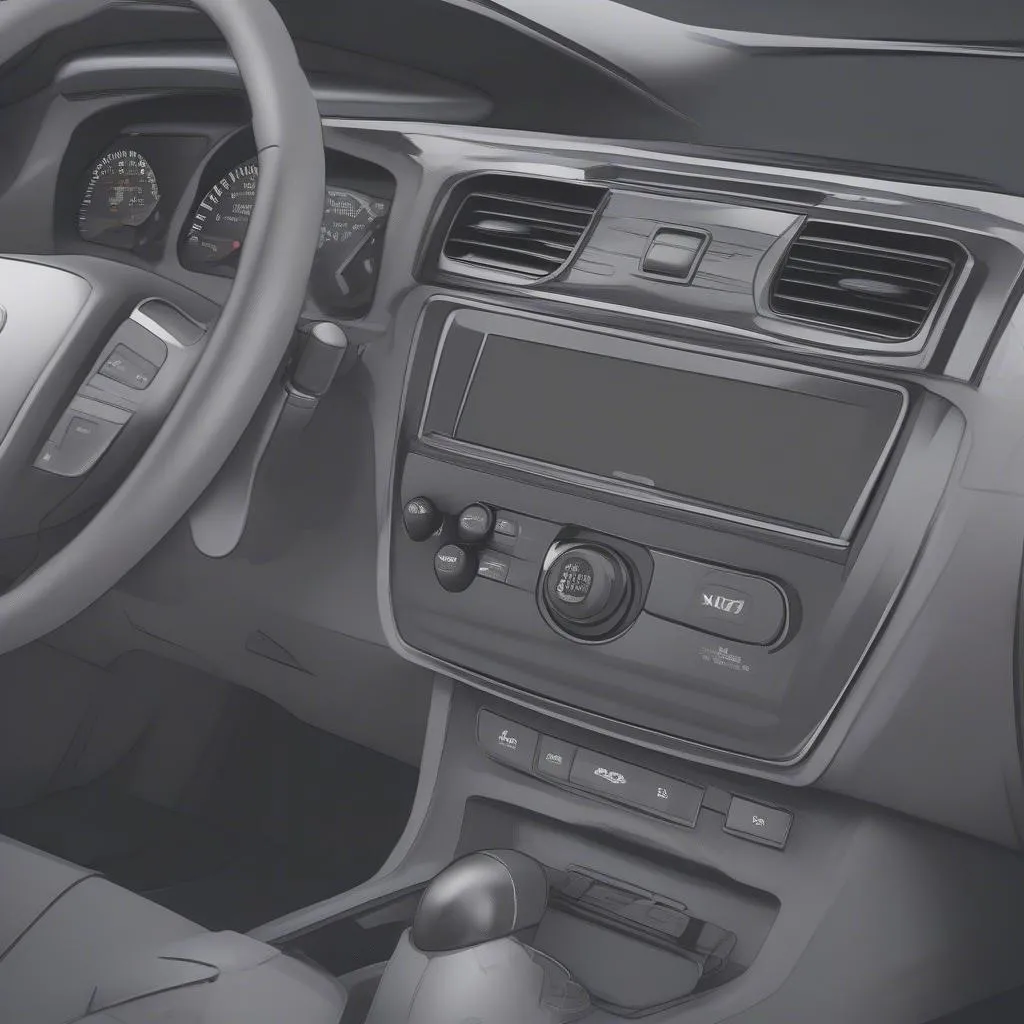Have you ever wondered what that little port tucked away beneath your car’s dashboard is for? That’s the OBD port, short for On-Board Diagnostics, and it’s a vital component for understanding and maintaining your car’s health.
Understanding the OBD Port
The OBD port is a standardized connector that allows technicians and car enthusiasts to access your vehicle’s computer system. Think of it as a communication channel between your car’s brain and the outside world. This connection lets you read diagnostic trouble codes, monitor real-time sensor data, and even adjust certain vehicle settings.
What does the OBD port do?
Imagine you’re driving down the highway, and suddenly the “check engine” light comes on. You might be panicking, wondering what’s wrong. That’s where the OBD port comes in. By plugging a diagnostic scanner into the OBD port, you can get a specific code explaining why the light is on.
Why is the OBD port so important?
The OBD port plays a crucial role in modern car maintenance. It allows:
- Diagnostic Trouble Codes: Identify and diagnose issues using codes generated by the car’s computer system.
- Sensor Data: Monitor vital sensor data like engine temperature, fuel pressure, and speed.
- Real-time Performance: Get detailed insights into your car’s performance, helping you optimize fuel efficiency and driving habits.
- Programming and Modifications: Program certain settings like tire size or adjust fuel mapping.
Who uses the OBD port?
The OBD port is used by a wide range of individuals and professionals:
- Mechanics: Diagnose and repair vehicles using specialized diagnostic scanners.
- Car Enthusiasts: Monitor engine performance, track data, and perform tuning adjustments.
- Insurance Companies: Verify vehicle condition and mileage for insurance purposes.
- Law Enforcement: Check for vehicle emissions compliance and inspect vehicle data in cases of accidents.
OBD Port: A Powerful Tool for Car Owners
The OBD port empowers car owners with the knowledge to understand their vehicles better. This knowledge helps you make informed decisions about maintenance, repairs, and even modifications. It’s like having a window into the inner workings of your car, allowing you to proactively address potential problems before they become major issues.
Common OBD Port Questions
Here are some common questions people have about the OBD port:
Where is the OBD port located?
The OBD port is usually located under the dashboard, near the steering column. It’s often hidden behind a small panel or cover.
 OBD Port Location
OBD Port Location
What kind of OBD2 scanner do I need?
The best OBD2 scanner for you depends on your needs and budget. Some basic scanners can read trouble codes, while more advanced ones offer live data monitoring, sensor readings, and even the ability to clear codes.
Can I use my smartphone to access the OBD port?
Absolutely! There are numerous smartphone apps available that can connect to your car’s OBD port using a Bluetooth adapter. These apps allow you to view live data, monitor engine performance, and even access some basic vehicle information.
Is it safe to use an OBD2 scanner?
Generally, using an OBD2 scanner is safe. However, it’s important to choose reputable brands and avoid using scanners from unknown sources. Some scammers might try to access sensitive vehicle data, so always be cautious and use caution when connecting to your car’s computer system.
Explore More
If you’re interested in learning more about the OBD port, here are some additional resources:
- Where is the OBD2 port located?
- Autel OBD2 Cable: A Comprehensive Guide
- Legitimate Street Cars and Autel OBD2
Contact Us
If you have any questions or need assistance with OBD diagnostics, our team of automotive experts is here to help. Contact us at +84767531508 for 24/7 support.
We’re passionate about helping car owners gain a deeper understanding of their vehicles. The OBD port is a powerful tool that can empower you to maintain your car effectively and safely. So, go explore the world of OBD diagnostics and unlock the potential of your vehicle!
Leave a comment below with any questions or share your own OBD experiences.